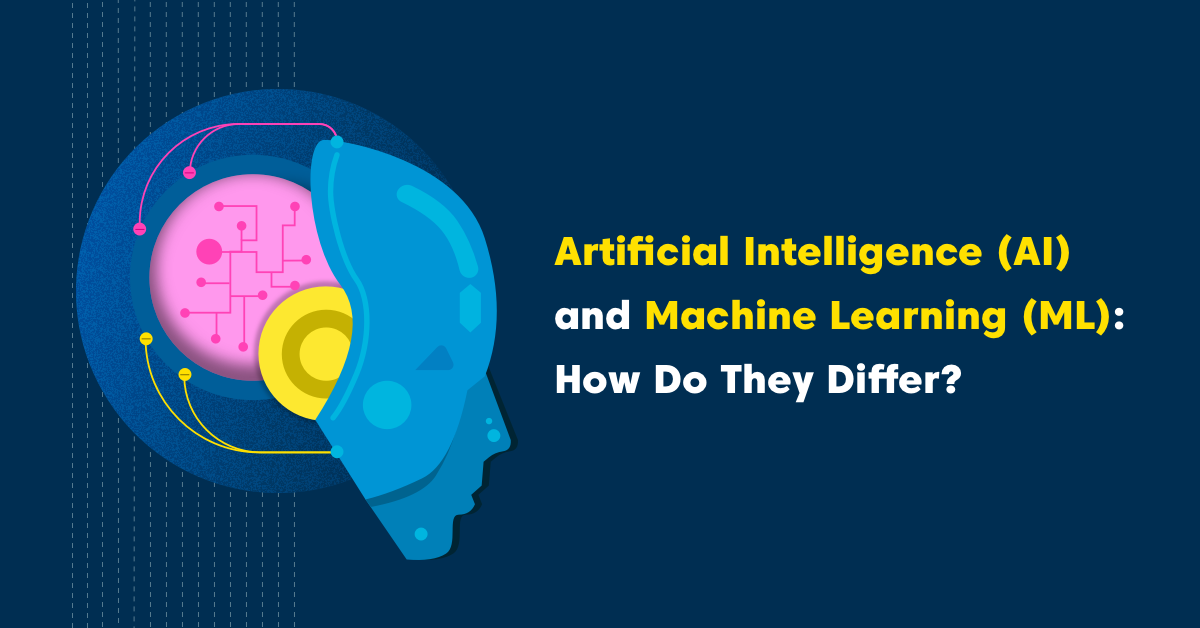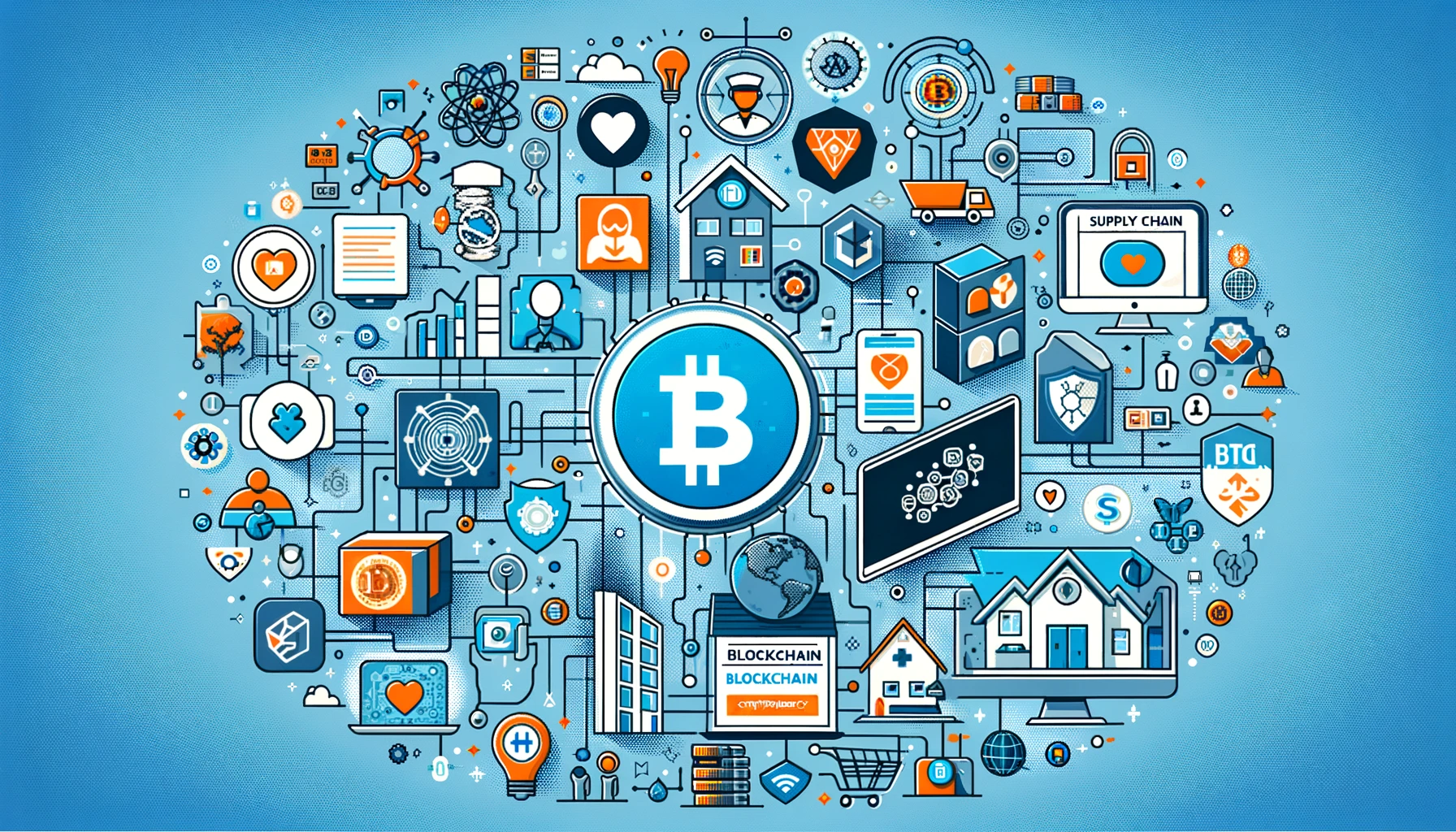
Unlocking the Future: A Beginner’s Guide to Artificial Intelligence (AI) & Machine Learning (ML)
In an increasingly digitized world, terms like "Artificial Intelligence" (AI) and "Machine Learning" (ML) are no longer confined to sci-fi movies. They are the invisible forces powering our smartphones, streamlining our daily tasks, and even revolutionizing industries from healthcare to finance. But what exactly are these powerful technologies, and how do they work?
If you’re a beginner curious about the minds behind the machines, you’ve come to the right place. This comprehensive guide will demystify AI and ML, breaking down complex concepts into easy-to-understand language, complete with real-world examples and practical insights.
I. What is Artificial Intelligence (AI)? The "Brain" of the Machine
Imagine creating a computer program that can think and reason like a human, or at least mimic those abilities. That, in essence, is the grand ambition of Artificial Intelligence (AI).
AI is a broad field of computer science focused on building machines capable of performing tasks that typically require human intelligence. These tasks include:
- Learning: Gaining knowledge and skills from experience.
- Problem-solving: Finding solutions to complex issues.
- Decision-making: Choosing the best course of action.
- Understanding language: Processing and interpreting human speech and text.
- Recognizing patterns: Identifying trends and relationships in data.
- Perception: Interpreting sensory information (like images and sounds).
Think of AI as the overarching goal: creating "smart" machines. Machine Learning is one of the most effective ways we’ve found to achieve that goal.
A Brief Look at AI’s Goals:
AI systems aim to perform specific tasks intelligently, from playing chess to diagnosing diseases. Depending on their capabilities, AI can be categorized into three main types:
- Narrow AI (Weak AI): This is the AI we encounter every day. It’s designed and trained for a very specific task.
- Examples: Virtual assistants (Siri, Alexa), spam filters, recommendation systems (Netflix, Amazon), self-driving cars (only focused on driving).
- Key Characteristic: It excels at its defined task but cannot perform outside of it. It doesn’t truly "understand" or have consciousness.
- General AI (Strong AI): This is the hypothetical AI that can understand, learn, and apply intelligence to any intellectual task that a human being can. It would possess consciousness and self-awareness.
- Current Status: Still largely theoretical and a subject of ongoing research.
- Superintelligence: A hypothetical AI that would surpass human intelligence across virtually all fields, including creativity, general knowledge, and problem-solving.
- Current Status: Purely speculative.
II. What is Machine Learning (ML)? How Machines Learn from Data
If AI is the big dream, Machine Learning (ML) is the primary engine driving its progress today. ML is a subset of AI that gives computers the ability to learn from data without being explicitly programmed for every single scenario.
Instead of writing millions of lines of code to cover every possible situation, with ML, you feed a machine vast amounts of data. The machine then learns to identify patterns, make predictions, or take decisions based on that data, much like a human learns from experience.
Think of it this way:
- Traditional Programming: You give the computer explicit rules. If X, then do Y. (e.g., "If email contains ‘prize money,’ mark as spam.")
- Machine Learning: You give the computer data (e.g., thousands of emails, some marked "spam," others "not spam"). The computer then learns the rules or patterns itself to distinguish spam from legitimate emails. It figures out that "prize money" often appears in spam, but also considers other factors it discovers.
Why is Machine Learning So Powerful?
- Scalability: It can process and learn from massive datasets that no human could ever analyze manually.
- Adaptability: ML models can continuously improve and adapt as they encounter new data, making them more accurate over time.
- Pattern Recognition: It excels at finding hidden patterns and insights in data that might be invisible to human eyes.
- Automation: It automates complex decision-making and prediction tasks, saving time and resources.
III. How Does Machine Learning Work? The Learning Process Explained
At its core, Machine Learning involves a few key steps:
- Data Collection: This is the foundation. ML models need a lot of data – the more, the better. This data can be anything from images and text to numbers and sensor readings.
- Example: For a self-driving car, this would be data from cameras, radar, lidar, and GPS, showing roads, traffic signs, pedestrians, and other vehicles.
- Data Preparation (Pre-processing): Raw data is often messy. It needs to be cleaned, organized, and transformed into a format that the ML algorithm can understand. This might involve removing errors, filling missing values, or scaling data.
- Example: Ensuring all images are the same size, correcting blurry images, or standardizing sensor readings.
- Choosing an Algorithm (The "Learning Model"): This is where the "learning" happens. An algorithm is a set of rules or instructions that the computer follows to learn from the data. There are many different types of algorithms, each suited for different tasks.
- Example: A "decision tree" algorithm to make yes/no decisions, or a "neural network" for more complex pattern recognition.
- Training the Model: The prepared data is fed into the chosen algorithm. The algorithm analyzes the data, looks for patterns, and adjusts its internal parameters to minimize errors in its predictions or classifications. This is the "learning" phase.
- Example: The self-driving car algorithm learns to associate certain visual patterns with "stop signs" and "pedestrians." It makes initial "guesses" and then corrects itself based on the actual outcomes in the training data.
- Evaluation (Testing): Once trained, the model is tested on new, unseen data to see how well it performs. This is crucial to ensure the model isn’t just memorizing the training data but can generalize its learning to real-world situations.
- Example: Showing the self-driving car new images of stop signs it hasn’t seen before and checking if it correctly identifies them.
- Deployment & Monitoring: If the model performs well, it’s deployed into a real-world application. It’s then continuously monitored to ensure it remains accurate and to collect new data for future improvements.
- Example: The self-driving car is now on the road, using its learned knowledge. As it drives, it collects more data, which can be used to further refine its learning.
IV. Key Types of Machine Learning
Machine Learning problems and algorithms are generally categorized into three main types based on the nature of the data and the learning process:
1. Supervised Learning
- Concept: This is like learning with a teacher. The model is trained on "labeled" data, meaning each piece of data has a corresponding "correct answer" or output. The model learns to map inputs to outputs based on these examples.
- How it Works: You provide the algorithm with examples of input data and the desired output for each input. The algorithm learns the relationship between the inputs and outputs.
- Common Tasks:
- Classification: Predicting a category or class (e.g., spam/not spam, disease/no disease, cat/dog).
- Regression: Predicting a continuous numerical value (e.g., house prices, temperature, stock prices).
- Real-World Examples:
- Spam Detection: Emails are labeled as "spam" or "not spam," and the model learns to classify new emails.
- Image Recognition: Images are labeled with objects (e.g., "car," "tree," "person"), and the model learns to identify these objects in new images.
- Predicting Customer Churn: Based on historical customer data, predict which customers are likely to cancel a service.
2. Unsupervised Learning
- Concept: This is like learning without a teacher. The model is given "unlabeled" data, and its task is to find hidden patterns, structures, or relationships within that data on its own.
- How it Works: The algorithm explores the data to discover inherent groupings or dimensions, without any prior knowledge of what the output should be.
- Common Tasks:
- Clustering: Grouping similar data points together (e.g., customer segmentation).
- Dimensionality Reduction: Simplifying complex data by reducing the number of variables while retaining important information.
- Association Rule Mining: Discovering relationships between variables (e.g., "customers who buy X also tend to buy Y").
- Real-World Examples:
- Customer Segmentation: Grouping customers into different segments based on their purchasing behavior for targeted marketing.
- Anomaly Detection: Identifying unusual patterns that might indicate fraud or a system malfunction.
- Genomic Sequencing: Finding natural groupings in genetic data.
3. Reinforcement Learning
- Concept: This is like learning through trial and error, similar to how a child learns to walk or a dog learns tricks. An "agent" learns to make decisions by interacting with an environment, receiving "rewards" for good actions and "penalties" for bad ones.
- How it Works: The agent performs an action, observes the outcome, and receives a reward (positive or negative). It then adjusts its strategy to maximize future rewards. There’s no labeled dataset; the learning comes from experience.
- Common Tasks:
- Game Playing: Training AI to play complex games (e.g., Chess, Go, video games).
- Robotics: Teaching robots to perform tasks in dynamic environments.
- Resource Management: Optimizing energy consumption in data centers.
- Real-World Examples:
- Autonomous Driving: A self-driving car learns to navigate traffic by getting rewards for reaching destinations safely and penalties for collisions or traffic violations.
- Robotics: A robot learns to pick up objects by trying different grip strengths and angles, getting rewards for successful grabs.
- Stock Trading Bots: An AI agent learns optimal trading strategies by receiving rewards for profitable trades.
V. The Power Trio: AI, ML, and Deep Learning
While Machine Learning is a subset of AI, Deep Learning (DL) is a specialized subset of Machine Learning.
- Deep Learning: Inspired by the structure and function of the human brain, Deep Learning uses Artificial Neural Networks (ANNs) with many layers (hence "deep") to learn from vast amounts of data. Each layer processes information and passes it on to the next, allowing the network to learn increasingly complex patterns.
Think of it like this:
- AI: The big goal (making machines smart).
- ML: A way to achieve AI (machines learn from data).
- DL: A powerful technique within ML (using complex neural networks to learn even more sophisticated patterns, especially from unstructured data like images, sound, and text).
Deep Learning has been responsible for many of the recent breakthroughs in AI, such as highly accurate facial recognition, realistic voice synthesis, and advanced natural language processing.
VI. Real-World Applications of AI & ML: Where You See Them Every Day
AI and ML are woven into the fabric of our daily lives, often without us even realizing it.
- Personalized Recommendations:
- How it works: Netflix suggests movies, Amazon recommends products, and Spotify curates playlists based on your past behavior and what similar users enjoy.
- ML Type: Often a combination of Supervised and Unsupervised Learning.
- Virtual Assistants & Chatbots:
- How it works: Siri, Alexa, Google Assistant, and customer service chatbots understand your voice or text commands, answer questions, and perform tasks.
- ML Type: Heavy use of Natural Language Processing (NLP), a field within AI that uses ML for language understanding.
- Self-Driving Cars:
- How it works: Vehicles use sensors, cameras, and ML algorithms to perceive their surroundings, predict the behavior of other road users, and navigate safely.
- ML Type: Computer Vision (for image recognition), Reinforcement Learning, Supervised Learning.
- Healthcare:
- How it works: AI assists in diagnosing diseases (e.g., identifying cancerous cells in scans), accelerating drug discovery, and personalizing treatment plans.
- ML Type: Supervised Learning (classification), Deep Learning.
- Financial Fraud Detection:
- How it works: Banks use ML to analyze transaction patterns in real-time, identifying unusual activities that might indicate fraud.
- ML Type: Supervised Learning (classification), Unsupervised Learning (anomaly detection).
- Spam Filters:
- How it works: Your email provider uses ML to analyze incoming emails and determine which ones are spam, preventing them from reaching your inbox.
- ML Type: Supervised Learning (classification).
- Image & Facial Recognition:
- How it works: Unlocking your phone with your face, tagging friends in photos on social media, or even security systems identifying individuals.
- ML Type: Deep Learning, Computer Vision.
- Language Translation:
- How it works: Google Translate and similar services use ML to translate text and speech between languages, capturing context and nuances.
- ML Type: Deep Learning, Natural Language Processing.
VII. The Benefits of AI & ML: Transforming Our World
The widespread adoption of AI and ML isn’t just a trend; it’s driven by tangible benefits that are reshaping industries and improving lives:
- Increased Efficiency & Automation: Automating repetitive and mundane tasks frees up human resources for more complex, creative, or strategic work.
- Enhanced Accuracy & Precision: ML models can often make predictions and classifications with greater accuracy than humans, especially when dealing with vast datasets.
- Unlocking Insights from Big Data: AI and ML can process and find hidden patterns in massive datasets (Big Data) that would be impossible for humans to analyze, leading to valuable business intelligence and scientific discoveries.
- Personalization & Customization: From tailored recommendations to individualized healthcare plans, AI/ML enables highly personalized experiences.
- Improved Decision-Making: By providing data-driven insights and predictions, AI assists humans in making more informed and effective decisions.
- Innovation & New Discoveries: AI is a powerful tool in scientific research, helping to accelerate breakthroughs in areas like material science, genomics, and climate modeling.
- Solving Complex Problems: AI tackles challenges that are too complex or time-consuming for traditional methods, such as optimizing traffic flow or managing supply chains.
VIII. Challenges and Ethical Considerations of AI & ML
While the benefits are immense, the rise of AI and ML also presents significant challenges and ethical dilemmas that need careful consideration:
- Job Displacement: Automation powered by AI could lead to job losses in sectors with repetitive tasks, necessitating workforce retraining and new economic models.
- Bias in AI: If the data used to train AI models contains historical biases (e.g., racial, gender, or socio-economic), the AI will learn and perpetuate those biases, leading to unfair or discriminatory outcomes.
- Privacy Concerns: AI systems often require access to vast amounts of personal data, raising questions about data security, consent, and how this data is used.
- Accountability & Transparency: When an AI system makes a critical decision (e.g., in healthcare or legal contexts), it can be difficult to understand why it made that decision ("black box problem"), making accountability challenging.
- Security Risks: AI systems can be vulnerable to cyberattacks, manipulation, or malicious use, potentially leading to significant harm.
- Autonomous Weapons: The development of AI-powered autonomous weapons systems raises profound ethical questions about control, responsibility, and the nature of warfare.
- Ethical Guidelines: Establishing clear ethical guidelines and regulations for AI development and deployment is crucial to ensure it benefits humanity responsibly.
IX. Getting Started with AI & ML: Your Learning Journey
If you’re inspired to dive deeper into the world of AI and ML, here are some actionable steps for beginners:
- Learn Python: It’s the most popular programming language for AI and ML due to its simplicity, vast libraries (like NumPy, Pandas, Scikit-learn, TensorFlow, PyTorch), and large community support.
- Understand the Math Basics: While you don’t need to be a math genius, a basic understanding of linear algebra, calculus, probability, and statistics will be incredibly helpful.
- Explore Online Courses & Resources:
- Coursera, edX, Udacity: Offer excellent courses from top universities and companies (e.g., Andrew Ng’s Machine Learning course).
- Kaggle: A platform for data science and ML competitions, offering datasets and tutorials.
- YouTube Channels: Many channels explain concepts visually and practically.
- Start with Small Projects: Don’t try to build a self-driving car immediately! Begin with simpler projects like:
- Predicting house prices.
- Classifying images (e.g., cats vs. dogs).
- Building a simple recommendation system.
- Read Books & Blogs: There are many beginner-friendly books and blogs that can deepen your understanding.
- Join Communities: Engage with online forums, local meetups, or social media groups dedicated to AI/ML to ask questions and learn from others.
- Stay Curious & Persistent: AI and ML are rapidly evolving fields. Continuous learning and a curious mindset are key to staying relevant.
X. The Future of AI & ML: A World Transformed
The journey of AI and ML is just beginning. As these technologies continue to mature, we can expect them to:
- Become Even More Integrated: AI will seamlessly blend into more aspects of our homes, workplaces, and cities, making them smarter and more responsive.
- Drive Breakthroughs in Science & Medicine: Accelerating research, enabling personalized medicine, and potentially solving some of humanity’s most pressing challenges.
- Redefine Industries: From manufacturing to entertainment, AI will continue to optimize processes, create new products and services, and redefine business models.
- Foster Human-AI Collaboration: The future isn’t just about AI replacing humans, but about AI augmenting human capabilities, creating powerful partnerships between human creativity and machine intelligence.
- Address Global Challenges: AI could play a crucial role in tackling climate change, managing pandemics, and achieving sustainable development goals.
Conclusion: Embracing the Intelligent Revolution
Artificial Intelligence and Machine Learning are not just buzzwords; they are fundamental technologies that are reshaping our world at an unprecedented pace. From the personalized recommendations on your favorite streaming service to the advanced diagnostics in hospitals, AI and ML are already here, making our lives more convenient, efficient, and insightful.
Understanding these concepts, even at a beginner’s level, empowers you to navigate this intelligent revolution, appreciate its potential, and critically engage with its challenges. Whether you aspire to become an AI expert or simply want to be an informed citizen in an AI-driven world, the journey of discovery into Artificial Intelligence and Machine Learning is one of the most exciting and relevant adventures of our time. The future is intelligent, and it’s built on AI and ML.
![]()


Post Comment